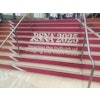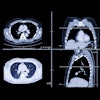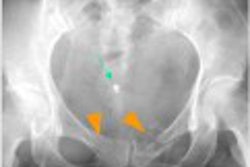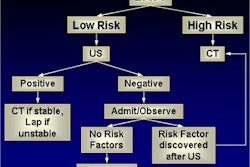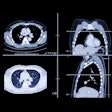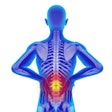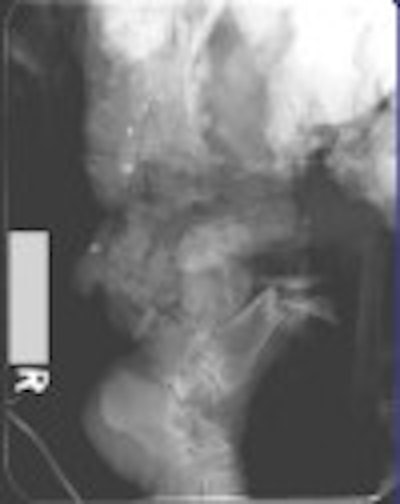
Anti-personnel land mines are the toxic inheritance of modern warfare. More than 110 million land mines of various types remain hidden around the world, waiting to be triggered by unsuspecting civilians, according to an United Nations Children’s Fund (UNICEF) report ("The Impact of Armed Conflict on Children" (A/51/306 and Add. 1).
Once laid, a mine may remain active for up to 50 years. UNICEF estimates that nearly 40% of the 20,000 annual land mine casualties are children. The International Committee of the Red Cross (ICRC) states: "An anti-personnel mine is an explosive device designed to maim or kill the person who triggers it. Mines are indiscriminate in terms of target and time. They go on killing and maiming -- soldiers and civilians, men and women, adults and children alike -- decades after the fighting has ended."
Radiographs were shown to be a potentially useful tool to reduce the number of intensive operations or positively influence the care of a land mine trauma patient, according to a poster presentation at the 2002 RSNA meeting in Chicago.
"The variety of fragment sizes and materials and the widespread burns and debris make a good radiologic evaluation potentially complementary to both short-term and long-term treatment," wrote the study authors, Drs. Justin Dodge and James Smirniotopoulos of the Uniformed Services University of the Health Sciences in Bethesda, MD.
The authors presented radiographs from archived case studies at the Casualty Care Research Center Wound Data and Munitions Effectiveness Team (WDMET) in Bethesda, MD, to help distinguish wound patterns. The case studies were all victims from the Vietnam War.
"Only casualties who were listed as died of wounds or killed in action were selected because all surviving servicemembers kept their radiographs as part of their permanent medical records," the authors wrote.
Dodge and Smirniotopoulos then took the archived radiographs and classified them according to ICRC patterns for mine injuries. Most of the cases, noted the authors, had gross autopsy correlations, which were originally recorded in an effort to determine the lethality of various weapons.
 |
| An example of a typical pattern I mine injury. Two radiographs and corresponding photographs showing the traumatic amputation of the foot stepping on the mine (mine blast wound) and the contralateral long bone fracture (mine blast injury). The photograph of the boots was taken from the casualty. Caption courtesy of Drs. Justin Dodge and James Smirniotopoulos, photos and radiographs from the WDMET archive. |
The ICRC defines three types of land mine injury patterns:
- Pattern I results from standing on a buried blast mine. Victims sustain traumatic amputation of the lower limb and often injure the other lower limb or genitalia.
- Pattern II results from fragmentation mines, which explode at waist height, have a killing zone of 25 meters (80 feet), and have an injury zone of 200 meters (656 feet). Injuries occur to the head, neck, chest, or abdomen and are often fatal.
- Pattern III results from handling a land mine. The victim sustains severe upper limb injuries with associated face injuries (Gray R., War Wounds: Basic Surgical Management, 1994, Vol.9, ICRC, Geneva).
 |
| An example of a pattern II mine injury. Two radiographs of a typical pattern II mine injury with extensive shrapnel fragments in the chest and abdomen and of the compromised body armor (flak vest). The corresponding photographs of the casualty and the flack vest are shown. Caption courtesy of Drs. Justin Dodge and James Smirniotopoulos, photos and radiographs from the WDMET archive. |
Dodge and Smirniotopoulos noted that the U.S. military has been deployed to some of the most mine-dense countries of the world including the former Yugoslavia, Afghanistan, and Somalia. In Bosnia and Herzegovina, for example, UNICEF estimates a density of 152 mines per square mile on the basis of an estimated 3 million land mines in that region.
According to a study cited by the authors ("Conventional Warfare: Ballistic, Blast, and Burn Injuries," Textbook of Military Medicine, Vol. 5, Part 1) blast injuries in the former Yugoslavia resulted in an average of 2.1 surgeries per patient in the field hospital.
Two key predictors of success in primary closure of wounds were the time to care (less than six hours) and meticulous debridement -- an area where accurate radiographic interpretation is critical, noted Dodge and Smirniotopoulos.
 |
| An example of a pattern III mine injury. The three radiographs show a typical pattern III mine injury with injuries to both arms and extensive head injury. Caption courtesy of Drs. Justin Dodge and James Smirniotopoulos, photos and radiographs from the WDMET archive. |
The Center for International Rehabilitation notes that while land mine use is decreasing, they have still been used in at least 23 conflicts, by up to 15 governments and over 30 rebel groups, since May 2000. In addition to the deleterious affect land mines have on humans and animals, the economic impact of the devices can be equally as deadly on the countries where they’re hidden.
"The widespread practice of mining agricultural land has led to malnutrition, even to famine and starvation. Mines that have been laid along roads and tracks prevent the safe repatriation of refugees and impede the delivery of aid," according to the Textbook of Military Medicine.
In addition to the treating the injuries sustained by military personnel, U.S. military medical professionals are often the only available source for land mind victims. As healthcare providers to a native population in this circumstance, Dodge and Smirniotopoulos suggested that medical treatment policy go beyond providing only emergency-level care.
"The increasing use of medical assets to treat indigenous populations should warrant additional consideration be given to the many indirect effects of land mine injuries such as post-traumatic stress disorders, nutritional deficiencies, and increased susceptibility to infectious disease," they wrote.
By Jonathan S. BatchelorAuntMinnie.com staff writer
June 27, 2003
Disclaimer: The opinions expressed in the poster study are those of the authors and are not necessarily representative of the Uniformed Services University of the Health Sciences, the Department of Navy, the Department of the Army, or the Department of Defense.
Related Reading
Teleradiology benefits Balkans, June 11, 2003
ASRT waives renewal fees for RTs who serve in military, November 14, 2001
Coping with the trauma of terror, November 1, 2001
Need a residency? See your Air Force recruiter, August 24, 2001
Military firepower could prove helpful in fight against breast cancer, December 19, 2000
Copyright © 2003 AuntMinnie.com
